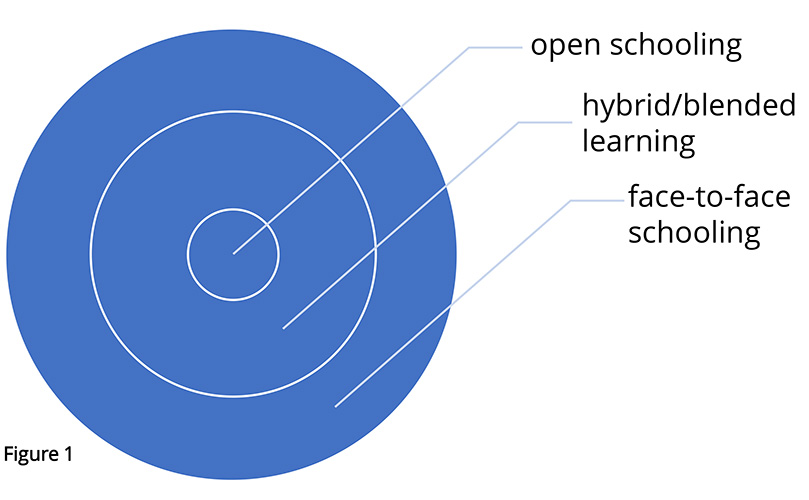Globally, the gross enrollment ratio at secondary level is still only about 76 percent and, if universal secondary education is to be achieved, there is a need to go beyond brick-and-mortar solutions. Open schooling is an effective response to the rapidly increasing demand for secondary education, both as an end itself and as a route to tertiary education. It can provide skills for employment and entrepreneurship and can be conducted cost-effectively and at scale. Open schooling uses open, distance and online methods to scale up access to secondary schooling to reach the unreached.
There is no right way to offer open schooling, and COL has worked with Ministries and Institutions all over the Commonwealth to develop models of provision that are appropriate for context. Appropriate models can improve access and retention, improve quality of learning outcomes achieved, and reduce costs per successful learner by using open educational resources (OER), implementing open, distance and e-learning methods (ODeL) and employing open educational practices (OEP).
Open Schooling Beyond COVID-19
As observed in a recent COL briefing note (2020), to manage the COVID-19 pandemic, governments around the world were compelled to restrict travel and impose physical distancing norms. This meant finding alternative ways, using distance education methods, to ensure that school learning could continue without requiring teachers and learners to be in the same space at the same time. Even very remote learners can be reached via distance education.
Developing approaches for more flexible provision of schooling opportunities can also help education systems meet the needs of numerous other learners who have been unable to access schooling, are in school but are not learning effectively, have dropped out of school, or who need a second opportunity to improve their schooling outcomes to access employment or further education and training opportunities. Responding effectively to a short-term crisis can therefore help education systems develop more flexible and resilient approaches for the longer term, as illustrated in Figure 1.

As illustrated in Figure 1, face-to-face schooling will likely remain at the heart of the schooling system and is probably the preferred option for very young learners as well as learners with special educational needs that parents/caregivers may not be equipped to address. However, hybrid (some face-to-face, some distance, some online, some broadcasting) and blended (face-to-face and online) provision could conceivably become the norm for older learners.
But for the approximately 300 million children unable to get to a physical school, an open schooling model, using open, distance and eLearning (ODeL) approaches and methods, should be an essential element of an integrated schooling system.
It is possible that learners could move between models as needed. For example, learners attending face-to-face schooling who encounter certain barriers (e.g., ill health) might continue learning from home through distance learning; learners struggling with some subjects through distance learning might be integrated for a time into more structured blended or face-to-face learning.
COL’s Open Schooling Portfolio
As noted in the Strategic Plan 2021-2027, working with ministries and institutions, open schooling can contribute to advancing the goals of 12 years of quality education for every girl in the Commonwealth. The focus will be on out-of-school girls in Sub-Saharan Africa. COL will:
- Develop sustainable and innovative models suitable to different contexts and constituencies.
- Build capacity of practitioners in course development, delivery and assessment.
- Promote the development and use of quality gender responsive OER.
To learn more about the potential of open schooling see our introductory micro-course here: Introduction to open schooling
Available at: Brochure


